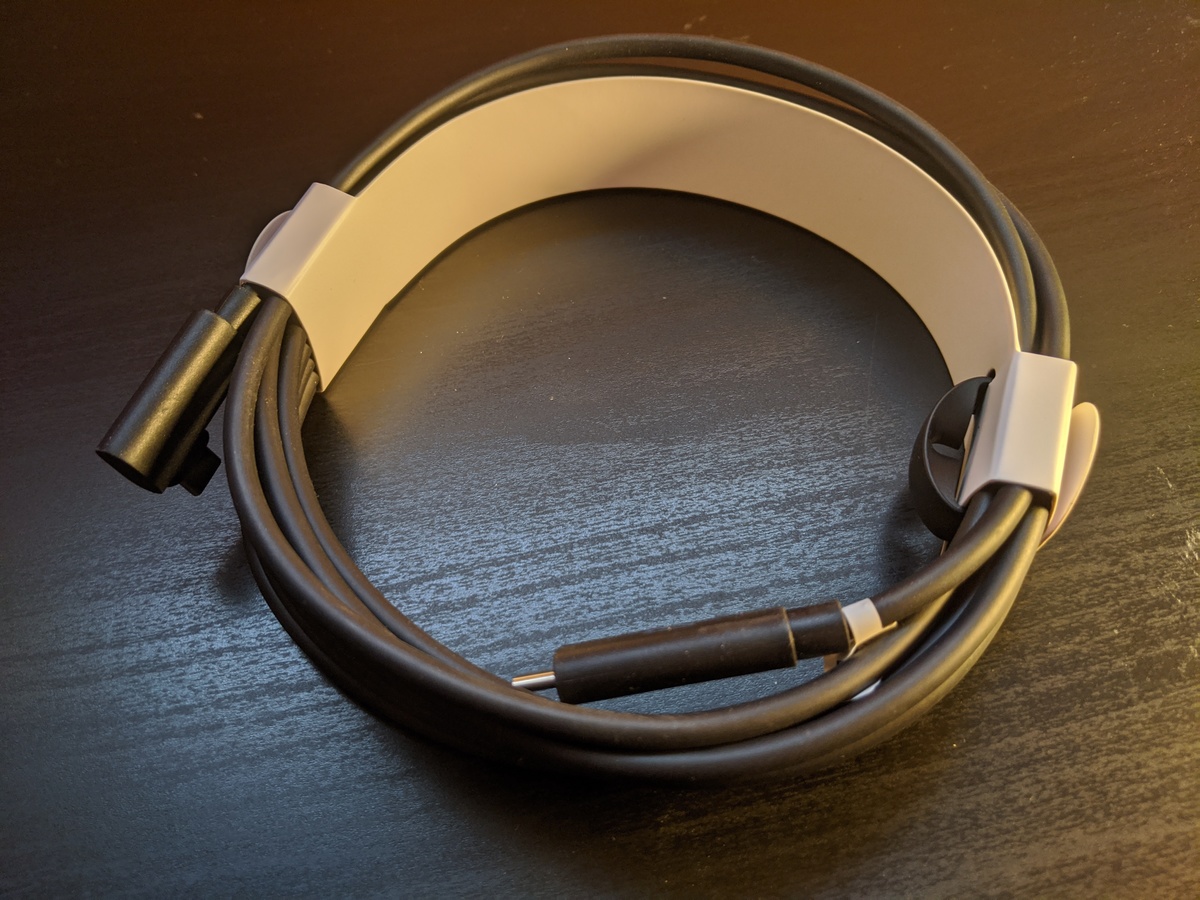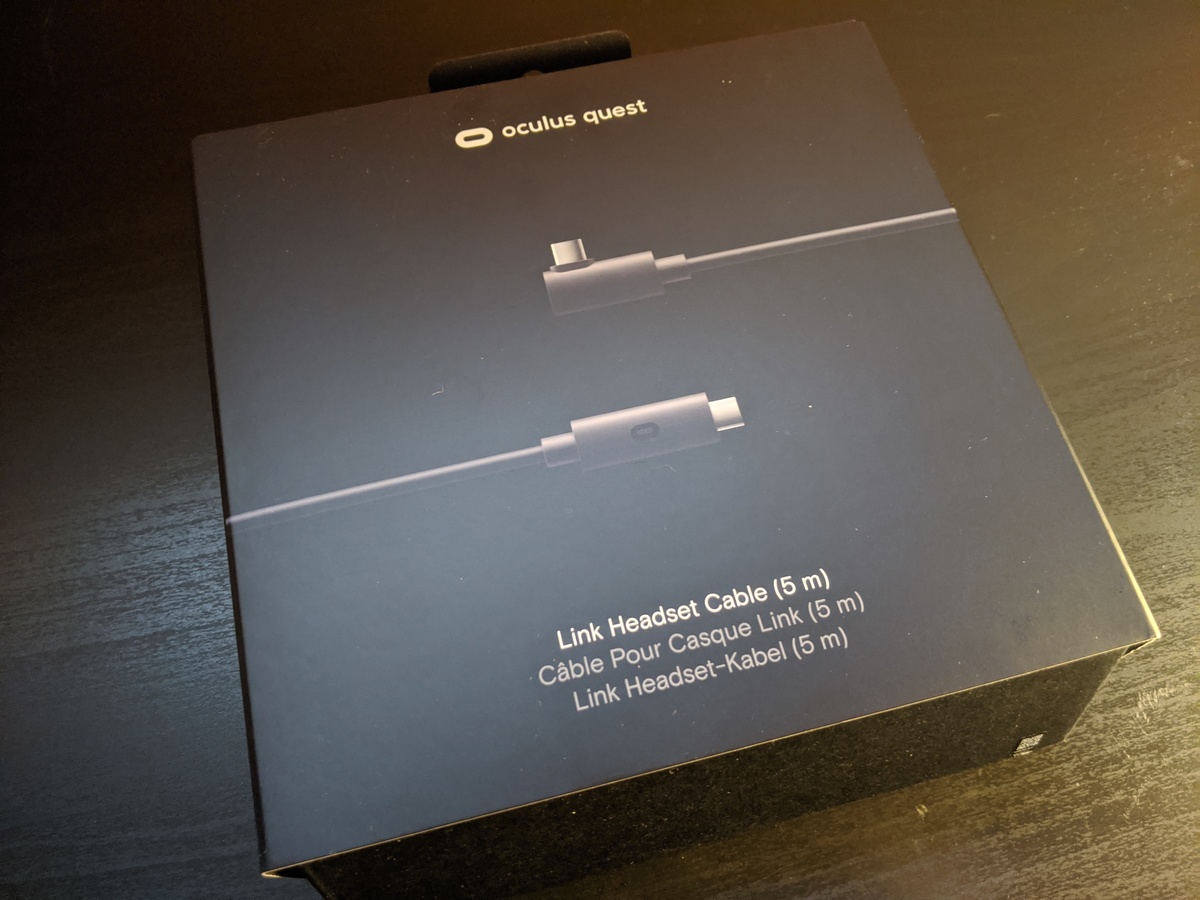When we wrote about the Oculus Link beta in November, I called it a “hardware hack.” Exciting, yes, but definitely not elegant. Link allowed you to turn your standalone Oculus Quest headset into a PC-ready Oculus Rift equivalent, as promised. But the only cables ready for the initial software rollout were off-the-shelf Anker cables. They were short, stiff, and worst of all stuck straight out of the side of the Quest like an arrow.
It was a tragedy waiting to happen. One good yank, and you might destroy your Quest forever. Or at least that’s how it felt.
The Oculus Link software is still in beta, but the Link hardware much less so. In January, Oculus finally released its bespoke Link cable. It’s going to cost you—a lot—but it’s worth it.
Midas touch
How much will it cost you? We might as well cover it up front, because it’s the proverbial elephant. Oculus is selling the Link cable for…well, I’ll wait for you to take a big drink of water first. Go ahead, get the spit-take prepped.
Ready?
It’s $80.
Ah damn, and just like that your desk is soaked. I’ll pause again so you can get some towels and dry everything off.
 IDG / Hayden Dingman
IDG / Hayden DingmanBut yeah, jokes aside, Oculus is selling an $80 USB-C cable. That’s uh, a lot of money. The Anker cables we tested in November cost $18 on Amazon. What changed?
Well first off, and this is the easiest part to grasp, Oculus’s cable is quite a bit longer. The Anker cable that Oculus recommended tops out at 10 feet, or a little over three meters. That sounds long, but it’s really not—especially if your USB 3.0 ports are confined to the rear of your PC. That means you’re wasting at least a foot or two running it back, and then an additional two or three feet covering the vertical distance to the headset. When all is said and done, you’ve got maybe five feet of actual usable cable.
The official Oculus Link cable is five meters, or around 16 feet. That’s the same length as the tethered Oculus Rift S cable, and only slightly shorter than the Valve Index cable. In other words, it’s a fairly standard length for tethered VR, and should be more than enough for most people’s setups. The Link cable spans my room with slack to spare.
“Okay, so it’s long. Great—but $80?”
I know, it still seems like a lot. Not all USB-C cables are the same though, a lesson people hopefully learned when Oculus specified which cable to buy for the Link beta in November. And in this case, appearances are deceiving.
 IDG / Hayden Dingman
IDG / Hayden DingmanThe official Link cable isn’t just a longer version of the aforementioned Anker cable. Anker’s cables are copper-based, and top out at 10 feet because that’s the recommended maximum length for a passive (a.k.a. non-powered) USB 3.1 cable. Past that, the signal begins to degrade.
There are third-party active cables that are Quest compatible though, and USB extender cables that are also Quest compatible. In other words,…
https://www.pcworld.com/article/3519488/oculus-link-review-this-80-cable-is-worth-every-penny-to-turn-quest-into-a-rift-rival.html#tk.rss_all
